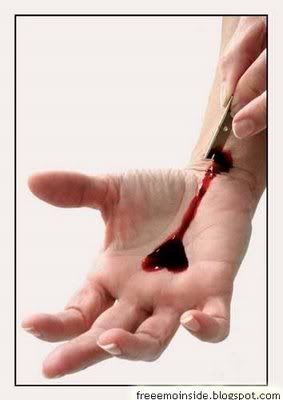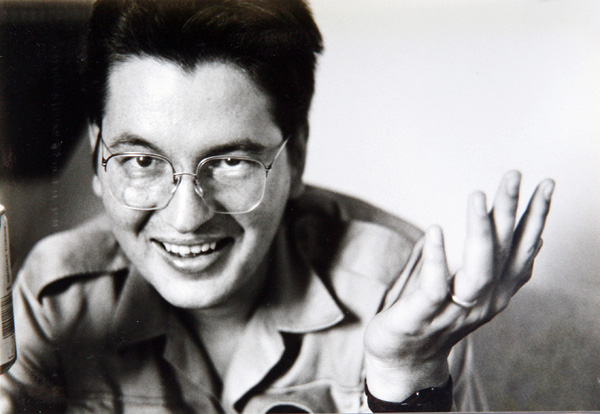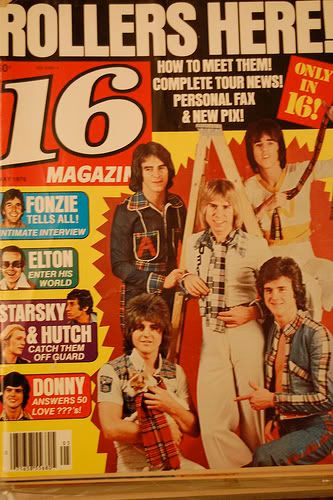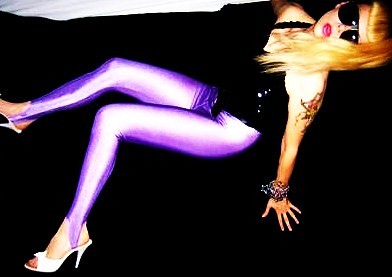SUBCULTURES
Hippies
The hippie subculture was a subculture that started from United States during the half of 60s'.
hipster -> hippie
It used to refer to beatniks who had moved into New York City's Greenwich Village, San Francisco's Haight-Ashbury district, and similar urban areas. The first hippie ideology had countercultural values of the Beat Generation. Some of them created their own social groups and communities, listened to psychedelic rock, embraced the sexual revolution, and used drugs especially marijuana and LSD to explore alternative states of consciousness.
- Flower Print Clothes
- Headbands
- Long Unkempt Hair
- Mini Skirts
- Chain Belts
- Boots - Go-go boots
- Grungy Jeans
- Big Leather Vests
- Fringe
- Peace Symbol
Teenyboppers
This subcultures is exclusive to females, not allowing male. It was introduced in the 50s from teens who listened more pop and rock and roll. "Teenybopper” became well known in the late 1960s and early 1970s, when the marketing of pop music, teen idols and fashions aimed specifically at younger girls, around 13 years old who also used to collect pin ups and posters from several bands of this era as they "had to" be in the latest trends.. It is a "retreat and preparation", allowing girls to relate to their peers and "practice in the secrecy of girl culture the rituals of courtship away from the eye of male ridicule”, also having no risks of standing out or personal humiliation, and serving as a retreat to avoid being labeled sexually. It also allows young girls to participate in semi-masturbatory rituals, since they don't have access to the masturbatory rituals common among boys. While the subculture allows them to have a space of their own, the subculture magazines offer an idealized relation with the teen idols, always implying a subordination of the female to the male, anticipating that the subordination will keep being present in their future relationships, and presenting an idealized form of marriage.

1972
May 1976
Hairstyle: The teenyboppers of the seventies went in, in a big way, for the pageboy haircut. This hairstyle was created by curling the hair on the back inwards, keeping the length up to the neck, and doing the same on the bangs and the hair at the sides, curling all the hair inwards in order to frame the face. The bangs were fluffed up to give a finishing touch.
Music: The Osmonds / Bay City Rollers
Sharpies
Sharpies (Sharps) were members of suburban youth gangs in Australia mainly from the 60s to 80s, particularly in Melbourne, but also in Sydney and Perth to a lesser extent. The term comes from their focus on looking sharp. The dress and dance styles were strongly influenced by the British ska, mod and skinhead subcultures, and many of the Sharpies were British immigrants, recently arrived as "Ten Pound Poms”. Sharpies would try to outdo fellow sharpies by creating the best patterns, colours and detail. They were known for being violent, although a strict moral code was also evident. Sharpies gangs in Melbourne included Prahran Sharps, Melbourne Sharps and the A.N.A. Sharps and Anderson Rd Sharpies, from the Broadmeadows region in the 70s. It wasn't unusual for there to be hundreds of Sharpies milling about. They often went to dances and early discos, and because of sheer numbers, they were almost untouchable by the police. This led to excessive violence on behalf of the Sharpies, who would basically fight who they wanted, and take beer and money from who they wanted. The Sharpies subculture faded out due to mistrust between gangs and excessive violence.
Clothing:
- Lee or Levi's jeans
- Sweaters and T-shirts (often designed by individual members).
Jesus Freak
Jesus freak was used as a pejorative term for those involved in the Jesus movement of the late 1960s and early 1970s. However, many members embraced the term, and its usage broadened to describe a Christian subculture throughout the hippie and back-to-the-land movements that focused on universal love and pacifism, and relished the radical nature of Jesus' message. Jesus freaks often carried and distributed copies of the "Good News for Modern Man,” a 1966 translation of the New Testament written in modern English. In Australia, and other countries, the term Jesus freak, along with Bible basher, is still used in a derogatory manner. It is most commonly used to refer to groups, such as Mormons and Jehovah's Witnesses, who participate in door-knocking to convert people. In Germany there is a Christian youth culture, also called Jesus Freaks, that claims to have its roots in the American movement. Moreover they are well known for the mass suicide that was committed by 900 Temple members in Jonestown, Guyana.

Clothing:- Suits
- Conservative Colors especially White Black Blue and Grey
- Ties
- Long Hair
- Stubble
- Long Skirts
Many Information in the book
Subculture: The Meaning of Style
By Dick Hebdige
Me Generation
Generation ME - I want, I need, I deserve, but…I would rather not earn it, just give it to me.
Generation me refers to people who were born from 70s' and after. It is a term that describes the behavior of those who were grown up in comforts and once they became adults they do not make any effort to develop themselves. They are people who "suffer" from fixation, boredom and the idea that they will become rich and famous without doing anything. Prosperous happiness covers their needs especially nowadays that every single thought can be known worldwide in some seconds via web. Actually in Generation Me people believe that their personal needs should come first. They never put the duty before personal satisfaction and use to depend financially to their parents blaming everyone else for their useless self.
In the Me Generation there are some subgroups depending on the decade that the people were born. Those who were born in 1960 - 1981 are also called "generation X", "millenials" or "Baby Busters".
After then and until 1999 they are called iGeneration because of the sudden internet disclosure. However, it is believed that the "i" that is in front of the title iGeneration makes it easier for some to belong to Me Generation. That happens due to the combination of the first thought of "i"= I = myself and their tendency to conform in everything that makes them seem special.

 With the start of the new millenioum Cybergoths became more colourful. They choose more neon colours than black like what they used in 90s'. The profile of those who belong in this subculture became more "futuristic". They adopt nicknames as "nuclear" and "biohazard". The taste in music became more electronic and the lyrics are vulgar while some of them refer to suicide and sacrifice.
With the start of the new millenioum Cybergoths became more colourful. They choose more neon colours than black like what they used in 90s'. The profile of those who belong in this subculture became more "futuristic". They adopt nicknames as "nuclear" and "biohazard". The taste in music became more electronic and the lyrics are vulgar while some of them refer to suicide and sacrifice.

 Despite the fact that the emo subculture started in middle 80s' it's been years until 2006 when it became a fashion. Youths, especially teenagers, adopted this style as it was one of the most known and effective that period. The ideology remains as it was but the fashion becomes more colourful. They are linked with the symbol of heart <3 and broken heart </3.
Despite the fact that the emo subculture started in middle 80s' it's been years until 2006 when it became a fashion. Youths, especially teenagers, adopted this style as it was one of the most known and effective that period. The ideology remains as it was but the fashion becomes more colourful. They are linked with the symbol of heart <3 and broken heart </3.  Emos use the phrase "Haters Make Me Famous" that exists because they use to be unfriendly to each other and "Hate" other emos. Moreover there are many people who not only don't like this subculture but they can't even accept it. These are the emo haters who use to go around in groups and beat emos while some of them use to have a pair of scissors so that to cut the emo fringes. Their music changes to more hardcore, the vocals more screamy and the lyrics are more suicidal and self-catastrophic.
Emos use the phrase "Haters Make Me Famous" that exists because they use to be unfriendly to each other and "Hate" other emos. Moreover there are many people who not only don't like this subculture but they can't even accept it. These are the emo haters who use to go around in groups and beat emos while some of them use to have a pair of scissors so that to cut the emo fringes. Their music changes to more hardcore, the vocals more screamy and the lyrics are more suicidal and self-catastrophic. This is a subculture that started in the late 90s' from US but it has been mainstream in 00s' till today. It is a sub-genre of hardcore-punk and post-hardcore music in a mix with video games' sounds and melodies. The vocals are usually screams and sometimes the music reminds more electro than hardcore. This movement started from the group Horse the Band that had the term "Nintendocore" as a joke but after 2000 when they published their first album that demostrated this style with the name "The black Hole". Nowadays one of the most famous Nintendocore bands is Enter Shikari. The dress-code is similar to hardcore one but Nintendocores use more bright and light colours than black and dark.
This is a subculture that started in the late 90s' from US but it has been mainstream in 00s' till today. It is a sub-genre of hardcore-punk and post-hardcore music in a mix with video games' sounds and melodies. The vocals are usually screams and sometimes the music reminds more electro than hardcore. This movement started from the group Horse the Band that had the term "Nintendocore" as a joke but after 2000 when they published their first album that demostrated this style with the name "The black Hole". Nowadays one of the most famous Nintendocore bands is Enter Shikari. The dress-code is similar to hardcore one but Nintendocores use more bright and light colours than black and dark.  Yeah. This is a subculture based on the famous Japanese anime Pokemon. It was emerged in the middle 2000s' and it started declining around 2009. Especially teens were members of this team. The have an outfit similar to Otaku and Emo but they didn't have the same music taste. It is said that they used to go to parties, dance reggaeton music and kissing and groping each other (both males and females). Their way of communication was through sharing their photos via Fotolog and talking on msn. They are usually from the Chilean middle and lower class. They are juxtaposed against another group calles pelolais. In January 2008, Internet messages surfaced urging violence against Pokemones and the members of this genre were usually attacked out of pubs and discos. In response of that, Chilean government and Santiago's main student leaders organized an anti-violence campaign called "Foundation for a Better Future".
Yeah. This is a subculture based on the famous Japanese anime Pokemon. It was emerged in the middle 2000s' and it started declining around 2009. Especially teens were members of this team. The have an outfit similar to Otaku and Emo but they didn't have the same music taste. It is said that they used to go to parties, dance reggaeton music and kissing and groping each other (both males and females). Their way of communication was through sharing their photos via Fotolog and talking on msn. They are usually from the Chilean middle and lower class. They are juxtaposed against another group calles pelolais. In January 2008, Internet messages surfaced urging violence against Pokemones and the members of this genre were usually attacked out of pubs and discos. In response of that, Chilean government and Santiago's main student leaders organized an anti-violence campaign called "Foundation for a Better Future". 


































.jpg)


